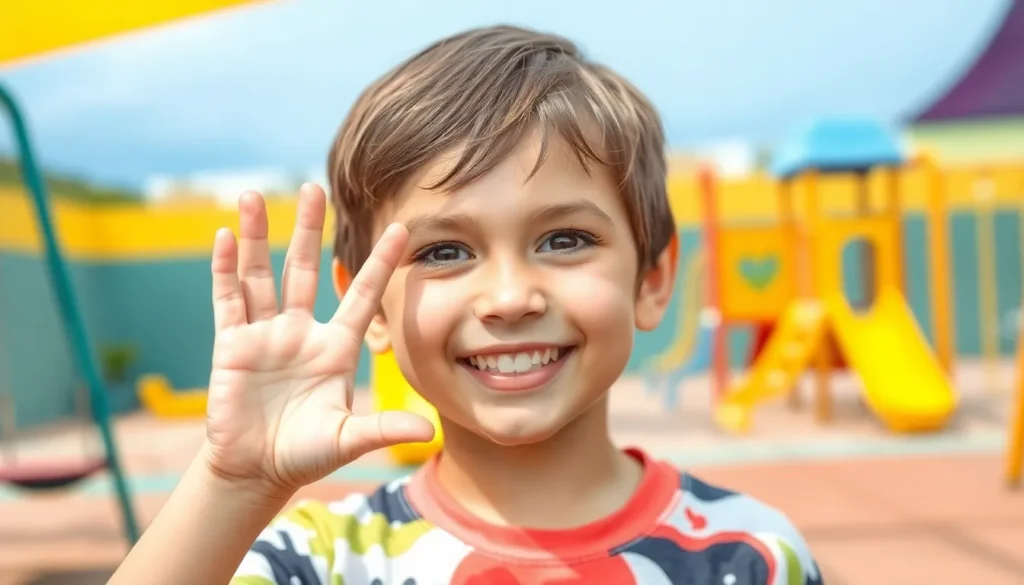Losing teeth is a rite of passage for kids, marking their transition from childhood to the early stages of adolescence. Parents often wonder which teeth their little ones will lose first and when this exciting process typically begins. Understanding this natural milestone can help ease any anxieties children might have about their changing smiles.
The first teeth to go are usually the primary incisors, commonly known as the front teeth. These tiny teeth typically start to wiggle and fall out around the age of six. Knowing what to expect can make the experience more fun and less daunting for both kids and parents. With a little guidance, this phase can be a memorable adventure filled with excitement and anticipation.
Table of Contents
ToggleOverview of Children’s Tooth Loss
Tooth loss in children marks an essential development phase. The primary incisors, located at the front of the mouth, play a significant role in this process. These teeth typically start to loosen and fall out around the age of six, although some variation exists.
The sequence of tooth loss generally follows this order:
- Central Incisors: The two front teeth often loosen first, usually between the ages of 6 to 7.
- Lateral Incisors: The next set consists of the lateral incisors, appearing around ages 7 to 8.
- First Molars: The first set of molars typically follows, lost between ages 9 to 11.
- Canines: Canine teeth, found between the incisors and molars, usually shed later, from ages 9 to 12.
- Second Molars: The final baby teeth to fall out are the second molars, generally around ages 10 to 12.
Parents often notice variations in the timing of tooth loss due to individual differences; however, these age ranges provide a general guideline. Understanding this sequence equips parents with information on what to expect and helps them support their children during this transition.
Primary Teeth and Their Importance

Primary teeth, often referred to as baby teeth, play a vital role in a child’s overall dental health and development. Understanding their types and functions provides insights into their significance during childhood.
Different Types of Primary Teeth
Primary teeth consist of 20 individual teeth, categorized into four types:
- Central Incisors: These are the front teeth, and children typically lose them first, around ages 6 to 7. They aid in biting and shaping food.
- Lateral Incisors: Located next to the central incisors, these teeth generally fall out between ages 7 and 8. They help with cutting food and contribute to overall aesthetics.
- Canines: Positioned next to the lateral incisors, canines usually emerge around ages 16 to 20 months. They play a crucial role in tearing food, falling out between ages 9 and 12.
- Molars: These teeth, including first molars and second molars, appear later and aid in grinding food. First molars typically lose between ages 9 to 11, while second molars follow suit between ages 10 to 12.
The Role of Primary Teeth in Development
Primary teeth not only support a child’s ability to eat and speak but also serve essential developmental functions:
- Space Maintenance: Primary teeth hold space for permanent teeth, ensuring proper alignment and positioning.
- Jaw Development: The presence of primary teeth promotes healthy jaw growth, facilitating the development of facial structure.
- Oral Hygiene Habits: Caring for primary teeth teaches children the importance of oral hygiene, forming habits that carry into adulthood.
- Social Confidence: Healthy primary teeth contribute to a child’s self-esteem, positively affecting their social interactions and confidence in appearance.
The Timeline of Tooth Loss
Tooth loss in children marks significant growth milestones, typically beginning around age six. Understanding the timeline helps parents prepare for this natural progression.
When Do Kids Start Losing Teeth?
Kids commonly start losing teeth between ages six and seven. The central incisors, located at the front, usually fall out first. Some children may experience slight variations in timing based on their individual development. Factors such as genetics and overall health may influence when teeth loosen or shed.
Typical Age Ranges for Losing Different Teeth
The sequence and timing of tooth loss are generally consistent across most children. The typical age ranges for losing different types of teeth include:
| Tooth Type | Age Range |
|---|---|
| Central Incisors | 6 to 7 years |
| Lateral Incisors | 7 to 8 years |
| First Molars | 9 to 11 years |
| Canines | 9 to 12 years |
| Second Molars | 10 to 12 years |
These ranges offer a guideline, but variations can occur. Knowing this timeline helps parents manage expectations and support their children during this transition.
What Teeth Do Kids Lose First?
Children typically start losing teeth around age six, with the primary incisors being the first to fall out in a predictable sequence.
Incisors: The First to Go
Incisors, including central and lateral types, are the initial teeth lost by children. Central incisors generally begin to loosen between ages six and seven, followed by lateral incisors between ages seven and eight. These teeth play a crucial role in a child’s ability to bite and cut food, laying the groundwork for proper eating habits.
Canines and Molars: The Last Ones Standing
Canines and molars are usually the last primary teeth to be lost. Children shed their first molars between ages nine and eleven, while canines typically follow, falling out between ages nine and twelve. Second molars, the final set of primary molars, usually emerge around ages ten to twelve. Canines assist with tearing food, while molars grind it, highlighting the significance of these teeth in a child’s transition to eating more solid foods.
Factors Influencing Tooth Loss
Several factors influence the timing and sequence of tooth loss in children. Understanding these elements helps parents anticipate changes and provide appropriate support.
Genetics and Hereditary Patterns
Genetics significantly impacts when children lose their teeth. An individual’s family history often dictates the timeline of tooth eruption and loss. If parents lost their teeth early or late, their children might experience similar patterns. Studies indicate that genetic factors contribute to the overall dental development process, including the timing of primary teeth falling out.
Environmental Factors
Environmental factors also play a vital role in tooth loss. Nutrition directly affects dental health. A balanced diet rich in vitamins and minerals supports healthy tooth development and may influence the timing of tooth loss. Additionally, oral hygiene practices, such as regular brushing and dental visits, impact overall dental health and could affect when teeth loosen. Trauma or injury to the mouth can lead to premature loss of teeth, highlighting the importance of protecting children’s mouths during play and sports activities.
Understanding which teeth kids lose first is essential for parents navigating this significant milestone. The process not only marks a transition in their child’s development but also plays a crucial role in their overall dental health. By being informed about the typical timeline and sequence of tooth loss, parents can support their children through this experience.
Encouraging good oral hygiene and safeguarding against injuries can help ensure a smooth transition. This knowledge empowers parents to address any concerns their children may have and fosters a positive attitude toward dental health. Embracing this natural journey can make losing teeth a memorable part of growing up.









